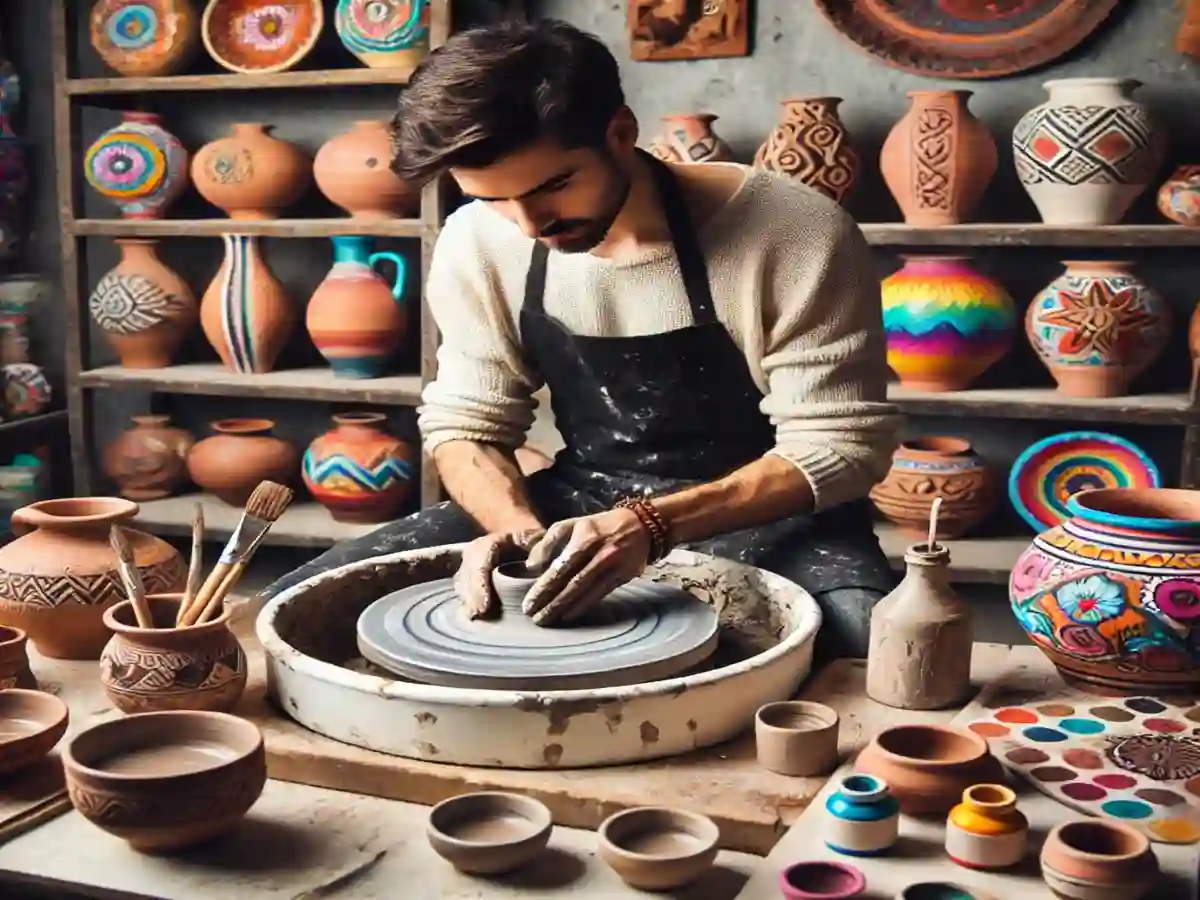An old trade, pottery has developed into a complex art form that fascinates artists as well as consumers. This work relies on clay, which changes under skilled hands. From the conventional pottery wheel to creative air-dry processes, this page explores the characteristics of pottery clay and its several uses.
Clay for Pottery Wheel
A classic instrument in the potter’s toolkit, the pottery wheel lets one produce symmetrical and polished works. The clay used for this needs particular characteristics: it should be flexible but strong, with a fine texture able to resist wheel centrifugal forces. Popular selections because of their endurance and smooth finish are stoneware and porcelain clays. When spun on the wheel, these clays provide a meditative experience as the potter’s hands shape the clay into exquisite forms, therefore fusing accuracy with imagination.
Unique Characteristics of Black Clay Pottery
One striking and unusual kind of ceramic art is black clay pottery. Often high in iron, this kind of clay is fired specifically to produce its unique black color. Black clay’s appeal stems from its capacity to produce striking contrasts and accentuate minute patterns. With the rich hue giving a sense of mystery and refinement, artists frequently utilize this clay to create both useful and ornamental objects. Working with black clay calls for expertise and patience since the final color shows only after firing, therefore highlighting the actual artistic ability of the potter.
Advantages of Air Dry Pottery Clay
Air dry clay presents a handy substitute for people looking for a more easily available entry into pottery. Air-dry clay hardens naturally when exposed to air, unlike conventional clays that call for kiln firing. For enthusiasts and instructional environments where access to a kiln could be restricted, this makes it perfect. Versatile air-dry clay lets one use a variety of techniques ranging from molding to sculpting. Users like its ease of use and ability to create lightweight, intricate works. Once dried, these works provide countless opportunities for customization since they may be painted and sealed.
Mexican Clay Pottery
Vibrant hues and cultural value abound in Mexican clay pottery. Rooted in centuries-old customs, this pottery technique captures the rich legacy and creative sensibility of Mexican potters. Usually obtained locally, the clay used is naturally occurring in the colors of the area. Burnishing and slip decorating improve the clay’s inherent beauty. Every piece captures the core of Mexican culture by means of its complex patterns and strong designs. For their originality and workmanship, both collectors and admirers value these works.
Clay Molds for Pottery
Essential instruments in the pottery-making process, clay molds let one replicate complex shapes and designs. Each of the several materials used to create these molds—including plaster and silicone—has different benefits. Plaster molds are popular because they absorb moisture and dry the clay. From elaborate tiles to sophisticated sculptures, molds let potters create consistent, finely detailed works. Using molds increases the creative possibilities by letting artists explore form and texture in ways hand-building alone cannot do.
Paint for Clay Pottery
Painting, a technique that improves the visual attractiveness of the work, is the last touch in pottery making. Clay pottery paints have to be fit for the clay body and fire technique. Common selections are underglazes and overglazes, each with unique effects and finishes. Applying underglazes before the last glaze lets one create elaborate designs that stay vivid after burning. Conversely, overglazes can incorporate metallic or iridescent effects and give a glossy surface. Reflecting the potter’s vision and style, the paint and technique chosen can turn an ordinary clay object into a work of art.
In Summary
From the tactile pleasure of working with a pottery wheel to the cultural richness of Mexican clay, each type of clay offers unique opportunities for artistic expression. Exploring the various facets of ceramic clay can deepen your appreciation for this ancient craft, regardless of your level of experience. You join a millennia-spanning legacy connecting with the earth and the art of those who came before as you shape, mold, and paint. Through the process of creating with clay, you can feel a sense of connection to both history and nature. The possibilities for creativity and self-expression are endless when working with this versatile medium.

